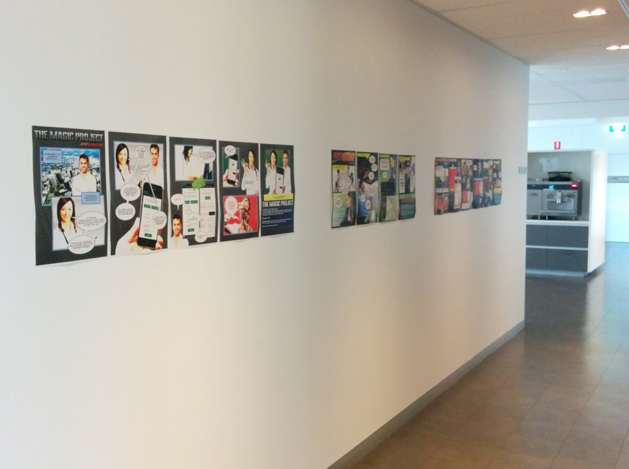In November this year I had the fortune of attending the Leading Design Conference held in London, UK. I’d not attended this conference hosted by Clearleft before so was really excited about attending and what I might walk away with.
Take a look at the speakers and topics https://leadingdesign.com/conferences/london-2019
The New Design Frontier Report
Invision had commissioned and provided a report “The New Design Frontier Report” that has a useful breakdown of current state and trends around:
- People: Team, Key partners, Executives and employees
- Practises: User Research, Design Strategy, Experimentation, UI Design
- Platforms: Design Operations, Design Systems
I think the breakdowns in the report can definitely help with figuring out where a team is at and also how to measure what’s appropriate for an organisation. Download it and take a look: https://www.invisionapp.com/design-better/design-maturity-model/
Conference themes and takeaways
It might help if I share what I was hoping to get from the conference. At the time of booking the tickets I was heading up the UX practise at CSIRO’s Data61. When the conference happened I had already moved to an IC role at Salesforce in Experience Architecture. (My reasons for the role change are many and complex and you’ll see some evidence of that in what I got from the conference.)
Initially I was looking for some well informed insights about how to run a design team in a consulting organisation, especially one working in true innovation – making new technologies. I still think the conference content was relevant for my new role as I’m setting up design capabilities for clients, leading designers on projects and establishing a design community of practise within Salesforce. As I have some residual anxiety from the time at Data61, I was also seeking some validation that all the hard decisions, initiatives and learning from failures had had some lasting impact for the business, my old team and myself. Lastly I was looking for guidance on solid metrics to measure a design team’s success that wasn’t NPS, CSAT or usability and adoption measures at a specific project level.
The themes throughout the conference presentations echo’d the report regarding people, practises and platforms. Anyway my take-aways are:
There is no design leadership playbook
We are all making it up as we go dependant on the businesses we are in. Most presentations were from design leaders in product organisations and consulting agency with no R&D and little enterprise represented. This was eye opening because you’d expect more maturity in leadership patterns from product and consulting. It appears design maturity is uneven across organisations and not necessarily tied to team size or age of the business.
Design as facilitator of change
Either up front or behind the scenes, designers are the agitators of change. Design is a risk-taking activity but if led well it can be holistic and inclusive activity. Leveraging the democratisation of design can assist in uplifting the role of designers through awareness. Probably not new news is that silos were called out as innovation killers. When considering digital transformation, it’s easy to forget that digital and associated technologies are incidental and that transformation is an organisational and behavioural change. Transformational leadership may come from non-digital or non-design background eg Sales, if financials are key to change. And if it’s driven by an external lead like a consultant, it needs to be very deliberately co-created with internal stakeholders. We have to be very careful of creating an “us and them” dynamic, as this can affect confidence in any high risk work. We need to be wary of unproductive coalitions or our own cultural silos. If we think about transformation goals without considering the complex adaptive systems we work within, this can result in unhappy people outside of the delivery team – the very people we are aiming to transform a business for.
Design is still an unknown capability
Design suffers from a lack of confidence in selling its value. But the key is remembering that design remains fluid – and things are moving fast and problems can’t be solved that are fixed in time and need people who can see patterns. Designers have this capability, especially those who can make a call in the absence of information and take it forward iteratively.
Measuring success
Perhaps if we work on answering why we can’t articulate the value of design this could lead to establishing that value, constrained by the organisation we are working in. Other tips were to start every new engagement with customer data to set business goals and benchmarks. It’s important to make sure design outputs and design management occurs in tandem as operation is the key to success – this means delivery. We need to be intentional in understanding what are we measuring and why, as there can be conflict between what we need to measure v’s what we can measure. There is some evidence that companies that link non-financial and value creation are more successful.
Be patient, impact and changes take longer than we think
My biggest flaw is impatience, I underestimate how long change can take and often get demotivated as a result. I really needed to hear this tip. Related to this is another gem that we simply cannot communicate too much. Lastly on this theme we were reminded that we can’t win everything and be prepared to cut losses. Two years into your leadership, expect a crash because failure is inevitable and recovery is hard.
Intentional team design
Design teams need to be thoughtfully created with a sense of purpose and longevity from the outset. Organic, unfocussed growth can lead to problems for leaders and organisations down the track. We saw many presentations of team structures and skills profiles and how they change over time as teams grow. What appeared to be a pattern was the establishment of sub teams and leadership roles earlier rather than later and also splitting out capability broadly into design ops and strategy. This aligns with the delegation topic below. Well structured collaboration was cited as a positive way to create team goals and rituals including career paths.
This is an area I have had my hardest lessons. Not having any kind of “playbook” means this knowledge is hard to come by without trial and error but it is also very difficult as most teams evolve in response to demand and their leader is usually a strong performer who has some natural relationship skills. I feel the design mentoring network could do with some work now there is an emerging class of experienced technology design leaders.
Ruthlessly prioritise, delegate as much as possible
Many presentations were internal facing and focussed on building team cultures. Once you’re a design leader your time in the field needs to be limited as energy goes to leading for impact and supporting your team. Also, we were cautioned to be authentic from the outset because faking it until you make it is exhausting.
Building trust and relationships
It is critical we understanding our audiences – our teams, our internal partners, our executive. Speaking their language and as delivering as promised is key.
The insights I’ve captured were from presentations and workshops by:
- Maria Giudice — Founder, Author, Coach, Hot Studio
- Kristin Skinner — Co-author, Org Design for Design OrgsFounder, & GSD
- Jason Mesut — Design Partner, Group Of Humans
- Melissa Hajj — Director of Product Design, Facebook
- Julia Whitney — Executive Coach, Whitney and Associates
- Alberta Soranzo — Director, Transformation Design, Lloyds Banking Group
I’d suggest following them on social media and blogs.
Leading Design 2019: https://leadingdesign.com/conferences/london-2019














